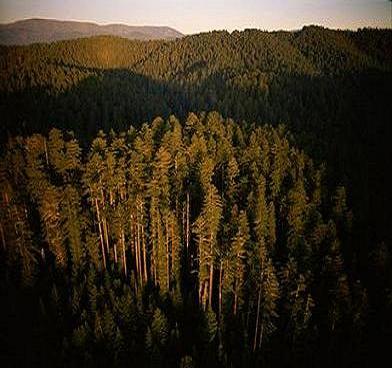
Towering redwoods can grow up to more than 200 feet tall with a diameter of about 15 feet. A few of them can be around 2000 years old. Thanks to their high-quality timber coupled with the high rate of production as compared to the timber trees, these tall poplars have become a favorite, which exactly is the reason for cutting them down in large numbers. Approximately 95 percent of the original forest has been cut down with only about 4 percent remaining.
Measures are taken to rebuild and restore the redwood forests in California and other parts of the world using a method known as ‘cloning’.
Easier than cloning mammals, cloning of a redwood tree involves cutting off a branch, around 4 to 6 inches long, and dipping it in a growth-hormone cocktail and later planting it in a moisture and temperature controlled fog chamber. Redwoods grow fast in the right environment which would include temperature around or above 20 degrees, but not below it with lots of rain or frequent fog. Redwoods naturally reproduce using clones too.
William J. Libby, a professor emeritus of forests and genetics at the University of California and a board member of the Save-the-Redwoods League has helped clone seedling redwood forests in England, New Zealand and other parts of the world since the 1980s. He has offered his help in finding suitable trees and planting sites.
A non profit group from Michigan known as the Champion Tree Project International has organized this project. This group has helped in cloning many of the largest and oldest living trees. The clones are planted around the country in what David Milarch, a co-founder of the project, considers living ‘genetic libraries’.
They are aiming at a collection of clones from around 100 of the tallest and oldest redwood trees and donating a set to whoever wants it and can take care of them. One set of clones will be planted in a living archive near a university in California. Dr. Libby said that this will enable the future scientists to study them and avoid the delay caused by getting individual permissions for each tree.
One of the several reasons in creating redwood forests, according to Dr. Libby, is that should anything happen to the original one in California, there will always be other redwood forests present. Dr. Libby said that there are impressive redwood forests in New Zealand along with England, France, Chile, Scotland and Spain, and the search is still on for other suitable planting sites.
Image: national geographic
Source: nytimes

